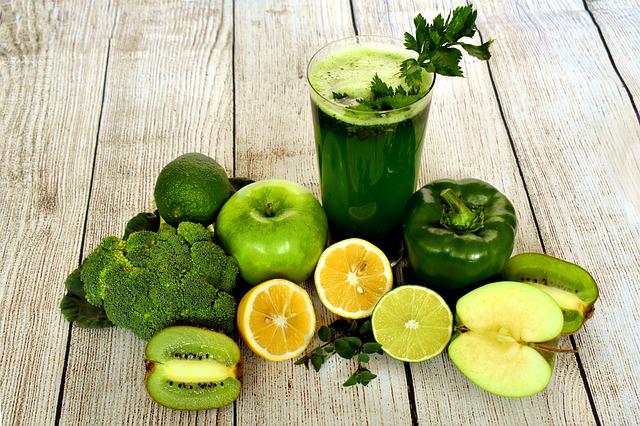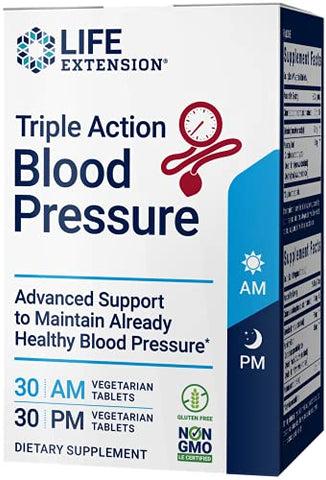
You've come to the right place if you are looking for plant-based recipes. There are many plant-based recipes available for breakfast, lunch and dinner. These are just a few of the options: Lentil soup and Chickpea Pot pie, Vegetable Enchiladas and Eggplant with tomatoes and peas.
Lentil soup
Lentil soup can be a healthy, delicious, and filling meal. It is a quick and easy vegan recipe, with only seven ingredients. This one pot recipe contains a variety of fresh vegetables, smoked paprika, cumin, coriander, turmeric powder, bay leaves, and salt. It makes a wonderful light dinner or lunch.
Start by washing the lentils in running water to make this soup. Before cooking, check for foreign or small stones. After you have washed them, put them in a pot of vegetable broth. Then add the bay leaves along with the chopped tomatoes. Cook until the lentils become soft and the soup reaches its desired consistency. To make the soup more filling you can add fresh herbs to the mix.
Vegetable enchiladas
Vegetable enchiladas are a delicious and easy to prepare plant-based meal. They are filled with beans and roasted veggies. You can easily adapt them to suit your family's taste and dietary requirements. They are made from whole grains, beans, vegetables, and just enough cheddar cheese to give them flavor.

It is possible to prepare and bake the enchiladas up to a day before baking. You can keep the enchiladas in the refrigerator up to three days if you don't plan to eat them immediately. Then, simply reheat them in the oven or microwave.
Chickpea pot pie
You can make chickpea pie as a quick and delicious one-dish dinner. It is a hearty vegetarian meal with a vegan cheddar biscuit topping. It's very easy to make, and it makes a great side dish for potlucks.
This dish is full of hearty vegetables, protein-rich chickpeas, and other healthy ingredients. This vegetarian dish, just like its chicken counterpart is packed with comforting classic flavours and can be made in one pan. It is possible to prepare the filling ahead and bake it for about 15 minutes.
Eggplant with tomatoes and peas
An eggplant dish with tomatoes and peas is great for those on a plant-based diet. It is simple to prepare and will help you get more vegetables in your diet. Peel the eggplant and cut into small pieces. Then mix the oil and the spices in a small bowl. A few fresh herbs can be added for extra flavor, such as parsley.
Eggplant is a great vegetable with a satisfying texture. Eggplant can be added to pasta recipes by being cooked with tomatoes and peas. The dish also works well with green beans, which add a rich texture. Another delicious recipe features eggplant with white beans, which create a chunky texture. The mixture is satisfying for vegetarians and meat eaters alike.

Vegan taco salad
This vegan taco dish is quick and easy. Simply cook the quinoa according the package instructions and then add some cilantro. Then, add the roasted vegetables and chickpeas to the bowl. It's ready for you to drizzle the dressing over it!
This healthy salad is packed with flavor and crunch. This salad is great for weeknight meals and can also be used to prepare plant-based meals. It has a positive effect on your gut and inflammation.
FAQ
What is the difference in a virus and bacteria?
A virus can be described as a microscopic organism incapable of reproducing outside its host cell. A bacterium is a single-celled organism that reproduces by splitting itself in two. Viruses measure only 20 nanometers in diameter, but bacteria is up to 1 millimeter in size.
Viruses are usually spread through contact with infected bodily fluids, including saliva, urine, semen, vaginal secretions, pus, and feces. Bacteria are often spread via direct contact with contaminated surfaces and objects.
Viruses can enter our bodies through cuts, scrapes, bites, or other breaks in the skin. They can also be transmitted through the eyes, nose, mouth, ears, vaginal, rectum, and anus.
Bacteria can get into our bodies through cuts, scrapes and burns, insect bites, or other skin breaks. They can also get into our bodies via food, water or soil.
Both viruses and bacteria can cause illness. But viruses can't multiply within their host. So they only cause illnesses when they infect living cells.
Bacteria can grow in their hosts and cause disease. They can even invade other parts of the body. To kill them, we must use antibiotics.
How often should I exercise?
Fitness is key to a healthy lifestyle. But, you don't need to spend a specific amount of time exercising. Finding something that you love and sticking with it is the key.
If you work out three times a week, then aim to complete 20-30 minutes of moderate intensity physical activity. Moderate intensity means you'll be breathing hard long after you're done. This type of exercise burns approximately 300 calories.
You can walk for 10 minutes every day if that is what you prefer. Walking is low-impact, easy on the joints, and it's very gentle.
Jogging is an alternative to running. You can do it for as little as 15 minutes each day. Running is a great exercise to build muscle tone and burn excess calories.
Begin slowly if your are new to exercising. Begin with 5 minutes of cardio every other day. Gradually increase the time you do cardio until your goal is reached.
What should I be eating?
You should eat lots of vegetables and fruits. They are high in vitamins and minerals, which can help strengthen your immune system. They are also rich in fiber, which is good for digestion and makes fruits and vegetables filling. Include at least five portions of fruit and vegetables per day.
Get plenty of water. Water flushes toxins out of the body and helps to feel full between meals. Drink about eight glasses each day.
Choose whole grains over refined ones. Whole grains retain all nutrients including B vitamins, iron and zinc as well as calcium, magnesium, calcium, protein, and magnesium. Refined grains lack some nutrition.
Avoid sugary drinks. Sugary drinks can be a source of empty calories, which can lead to obesity. Instead, opt for water, milk, or unsweetened tea.
Avoid fast food. Fast food has very little nutritional value. Fast food may be delicious, but it will not give you the energy that you need to perform your tasks properly. Use healthier options, such as soups, sandwiches, salads, and pasta.
Try to limit alcohol intake. Avoid alcohol as it can cause empty calories and poor nutrition. Limit yourself to no more than two alcoholic beverages a week.
Reduce red meat intake. Red meats contain high amounts of saturated fat and cholesterol. Lean cuts of beef or pork, lamb and chicken, as well as fish and turkey, are better choices.
What are the 7 tips to have a healthy life?
-
Make sure you eat right
-
Exercise regularly
-
Sleep well
-
Make sure to drink plenty of water.
-
Get enough rest
-
Happy!
-
Smile often
Statistics
- WHO recommends consuming less than 5% of total energy intake for additional health benefits. (who.int)
- This article received 11 testimonials and 86% of readers who voted found it helpful, earning it our reader-approved status. (wikihow.com)
- The Dietary Guidelines for Americans recommend keeping added sugar intake below 10% of your daily calorie intake, while the World Health Organization recommends slashing added sugars to 5% or less of your daily calories for optimal health (59Trusted (healthline.com)
- WHO recommends reducing saturated fats to less than 10% of total energy intake; reducing trans-fats to less than 1% of total energy intake; and replacing both saturated fats and trans-fats to unsaturated fats. (who.int)
External Links
How To
What does "vitamin" actually mean?
Vitamins can be described as organic compounds found in food. Vitamins are essential for our bodies to absorb nutrients from the foods we eat. Vitamins cannot be made by the body; they must be taken from food.
There are two types if vitamins: water soluble, and fat soluble. Water soluble vitamins dissolve easily in water. Vitamin C,B1(thiamine), B2 (2riboflavin), and B3 (3niacin), as well as vitamin C,B1, B2 (riboflavin), and B3 (niacin), vitamin B6 (pyridoxine), vitamin folic acid (biotin), pantothenic, and choline are examples. Fat-soluble vitamins are stored within the liver and in fatty tissue. Some examples include vitamin D and E, K, A, beta carotene, and A-vitamins.
Vitamins are classified based on their biological activity. There are eight main groups of vitamins.
-
A - Vital for healthy growth.
-
C - vital for nerve function and energy generation
-
D - Vital for healthy bones and teeth
-
E - needed for good vision and reproduction.
-
K - essential for healthy nerves, muscles, and joints.
-
P - essential for strong bones, teeth and tendons
-
Q - Aids in digestion and absorption.
-
R - Red blood cells are made from red blood cells.
The recommended daily allowance for vitamins (RDA) varies according to age, gender, or physical condition. RDA values are set by the U.S. Food and Drug Administration (FDA).
For adults aged 19 and older, the RDA for vitamin B is 400 micrograms daily. Because it is essential for the development of the fetus, pregnant women should consume 600 micrograms per days. Children ages 1-8 require 900 micrograms per day. Children under 1 year old require 700 micrograms daily, while infants over one year old need 500 micrograms every day. This decreases between 9 and 12 months.
Children aged 1-18 years need 800 micrograms daily, while children overweight require 1000 micrograms per days. Children who are severely obese or underweight will need 1200 micrograms each day.
Children aged 4-8 years old who have been diagnosed as having anemia require 2200 micrograms of vitamin C per day.
2000 micrograms per person is necessary for general health. Due to their increased nutrient needs, pregnant and breastfeeding women need 3000 micrograms daily.
Adults over 70 need 1500 micrograms daily, since they lose around 10% of their muscle mass every decade.
Women who are pregnant or lactating need more than the RDA. Pregnant mothers need 4000 micrograms per daily during pregnancy and 2500 after giving birth. Breastfeeding mothers require 5000 micrograms daily when breast milk production is occurring.